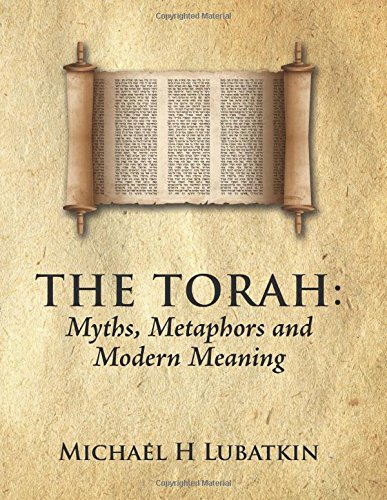The Torah: Myths, Metaphors and Modern Meaning (Volume 6)
The Torah: Myths, Metaphors and Modern Meaning offers readers of all faiths and beliefs new ways to interpret the stories from the first five books of the “Old Testament”, otherwise known as the Torah. You don’t have to be Jewish to read this book, for Lubatkin neither discredits nor promotes any particularly religion, nor assumes
The Torah: Myths, Metaphors and Modern Meaning offers readers of all faiths and beliefs new ways to interpret the stories from the first five books of the “Old Testament”, otherwise known as the Torah. You don’t have to be Jewish to read this book, for Lubatkin neither discredits nor promotes any particularly religion, nor assumes that the biblical stories represent historically accurate happenings. Instead, he regards each story as a work of literature, rich in symbolism, which was written two to three thousand years ago by those who, like ourselves, struggled with questions of ethics and morality. Lubatkin organizes his comments around hundreds of open-ended questions. For example, Sarah is just one of many women in the Bible who are said to struggle with being barren; what might this recurring theme mean? Are we to believe that Abraham was willing to sacrifice his son? Was Moses a murderer (after all, we are told that he killed an Egyptian task master)? Is there a relationship between the Ten Plagues and the Ten Commandments? When the Bible calls for the extermination of the Amalekites, is it condoning genocide? Is Leviticus 26:29 really saying that we will “eat the flesh of your sons and daughters” if we disobey the commandments? And, how is God portrayed in the text and why does God’s name sometimes appear as a plural noun and at other times conjugated as a verb? By addressing these and other such questions, Lubatkin makes the Biblical stories more accessible to those of us who, as contemporary thinkers, have found its stories primitive and brutal. In so doing, he provides readers with a wealth of fresh insights as to the beliefs and values held by the Israelites around the turn of the Common Era, just prior to the rise of Christianity and Rabbinic Judaism. The book’s question-driven format is thus well-suited as a resource as well as a guide for teaching basic courses on any of the Bible’s first five books to oneself and to others







Comments